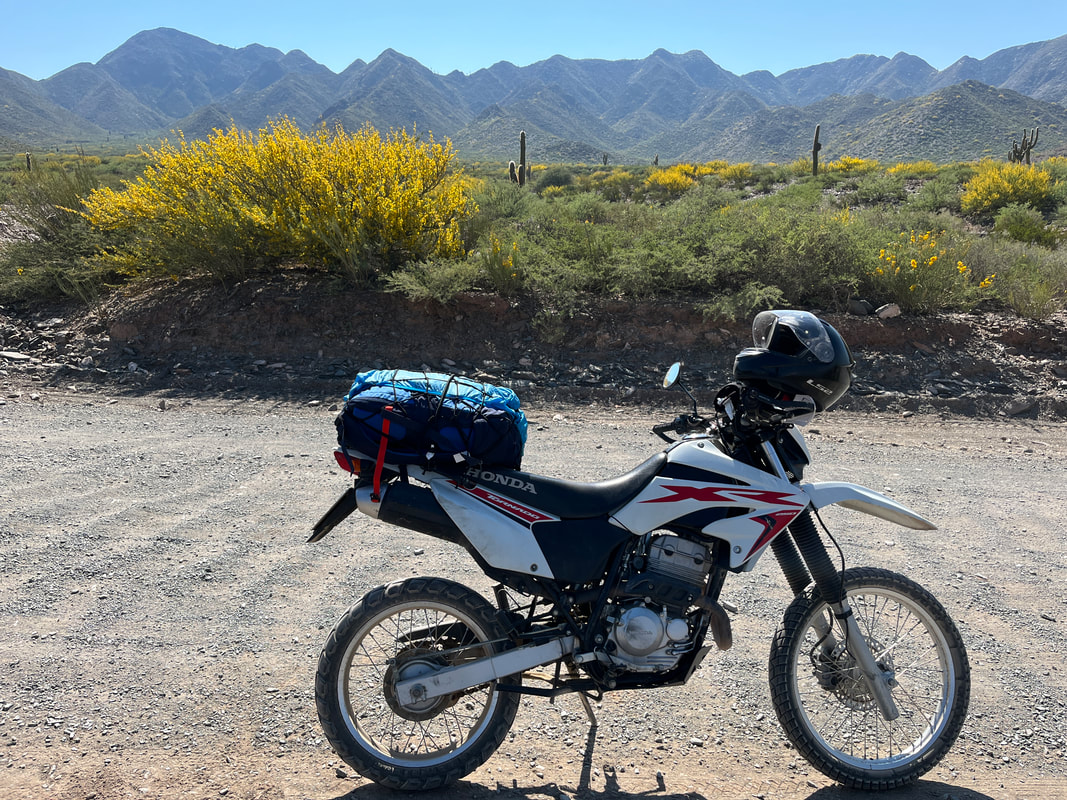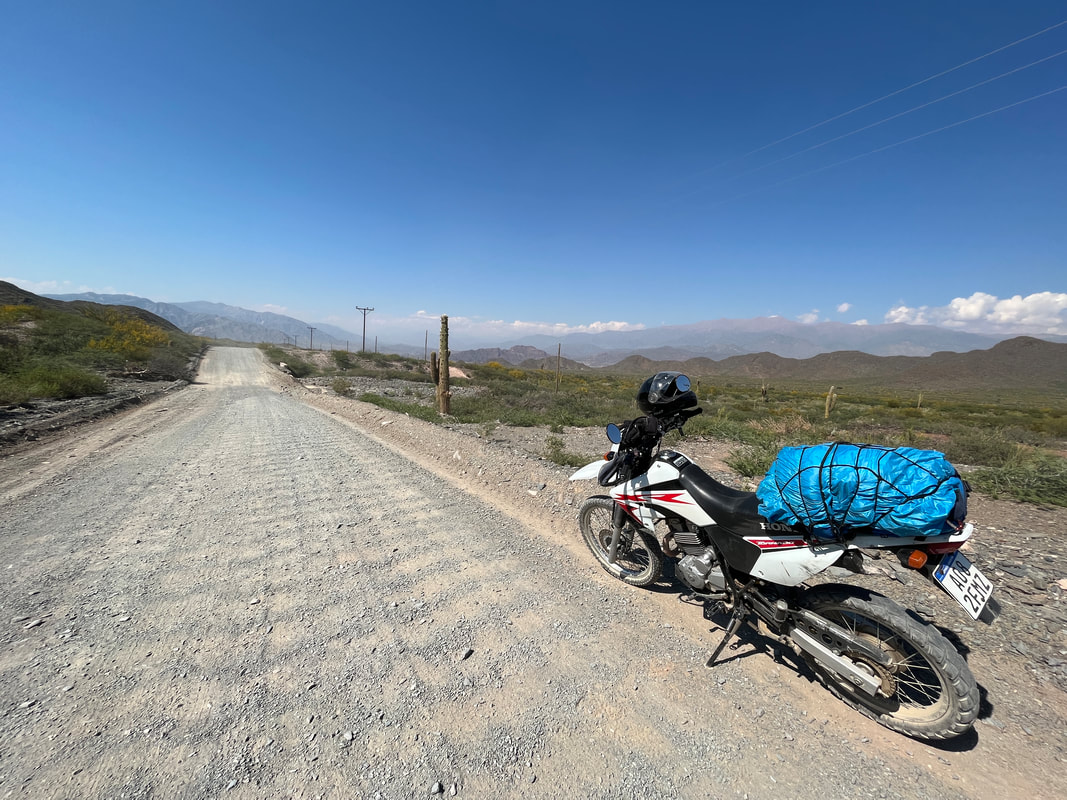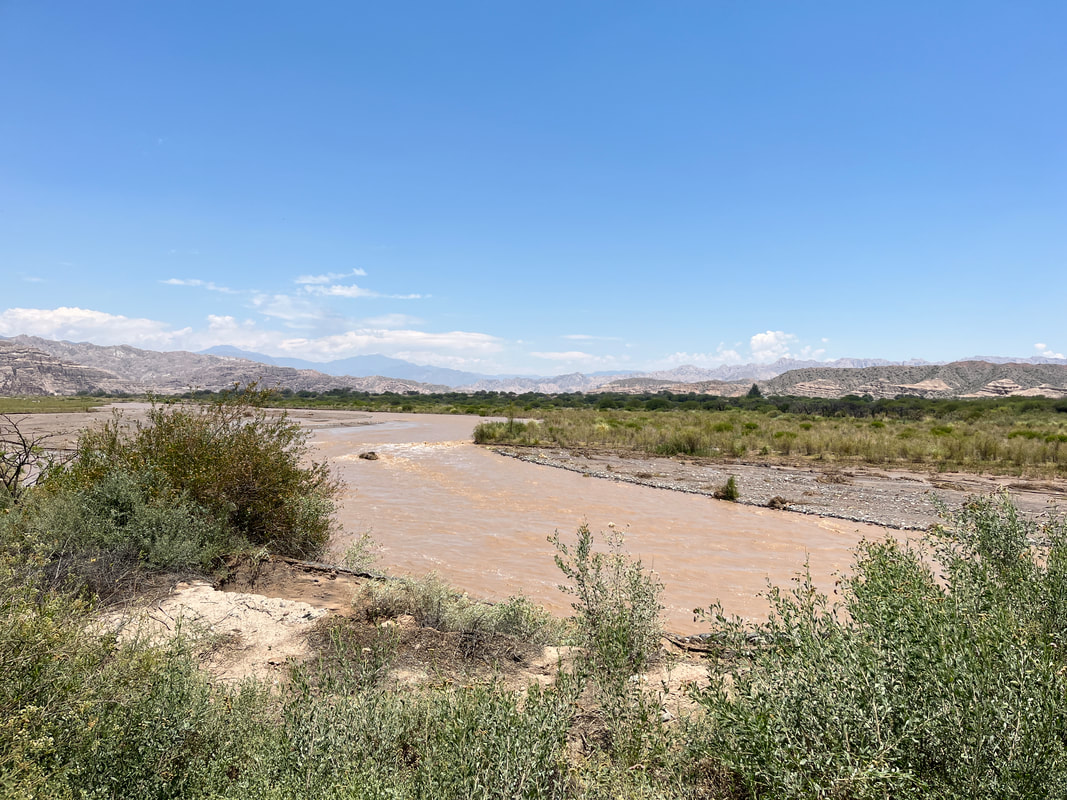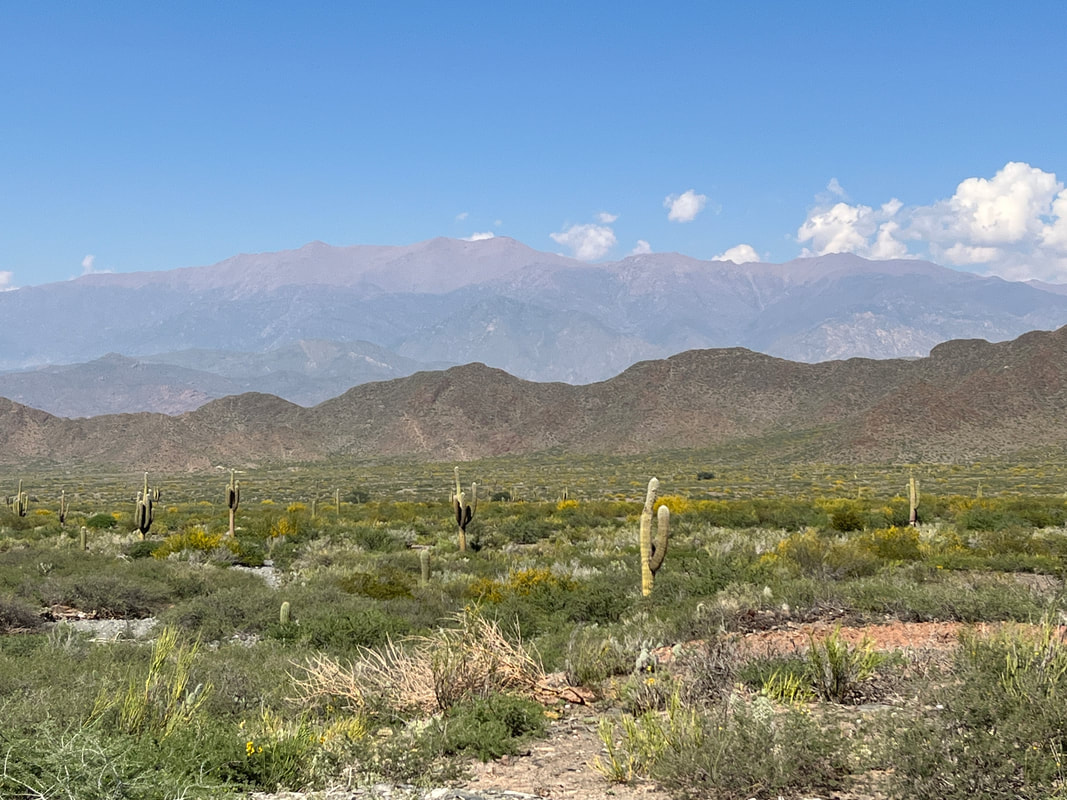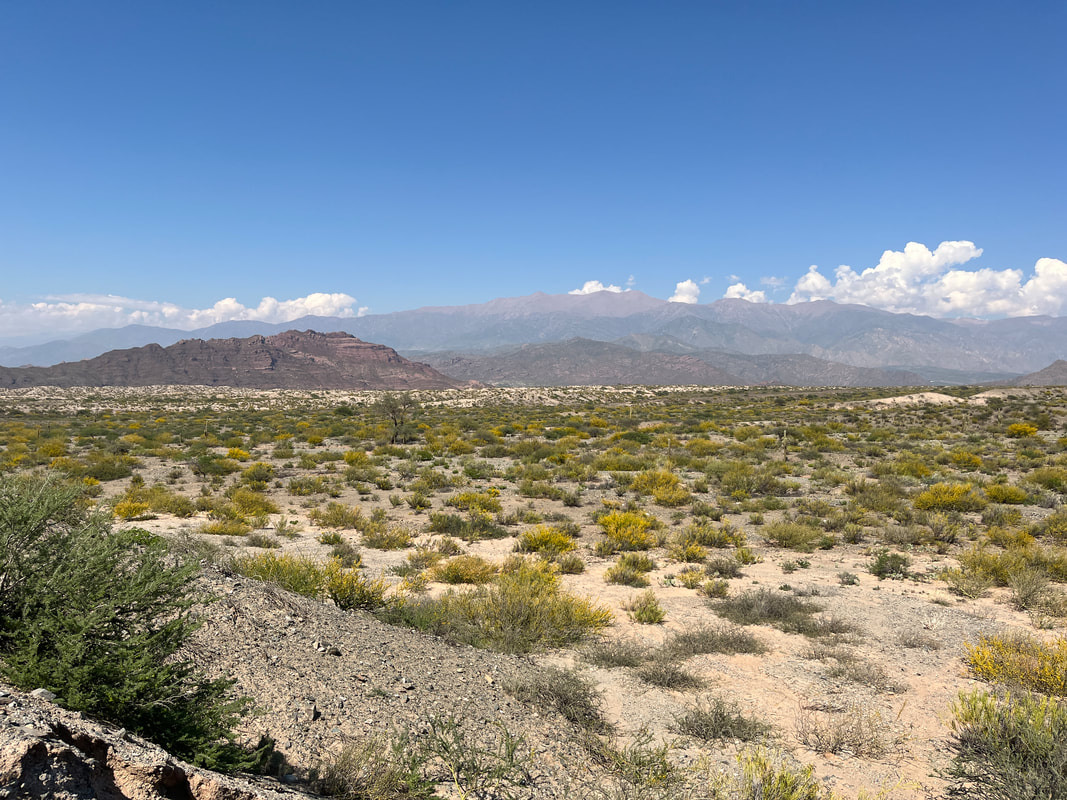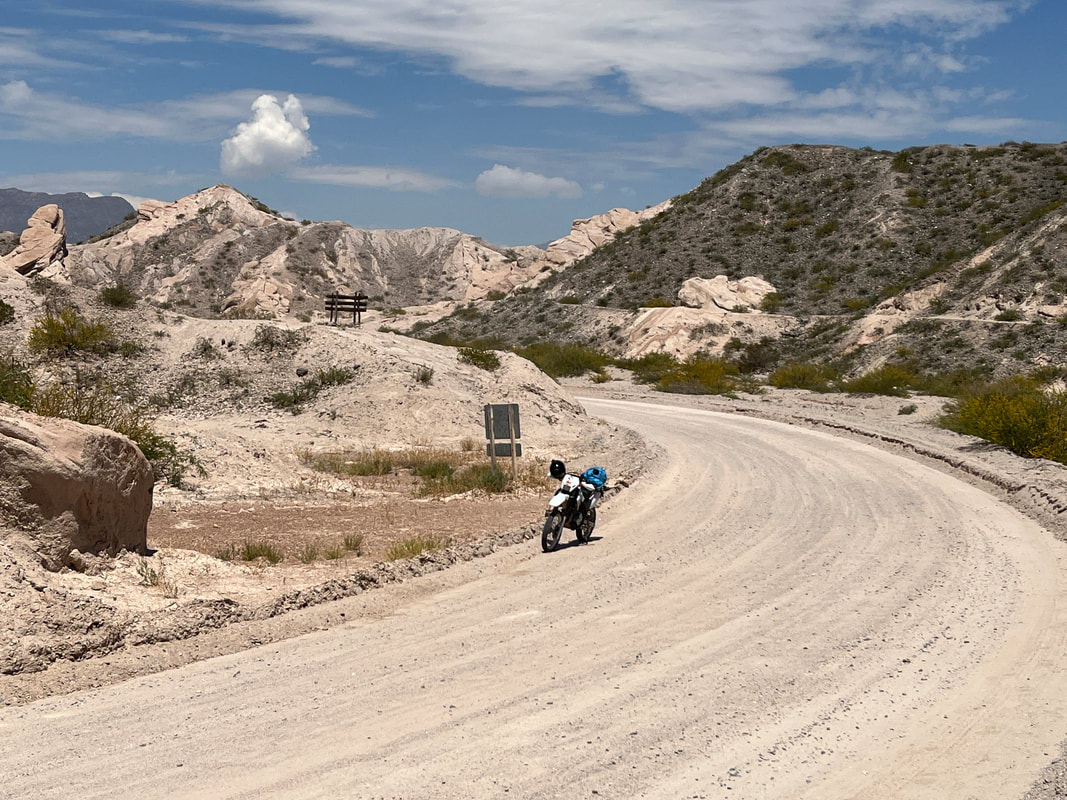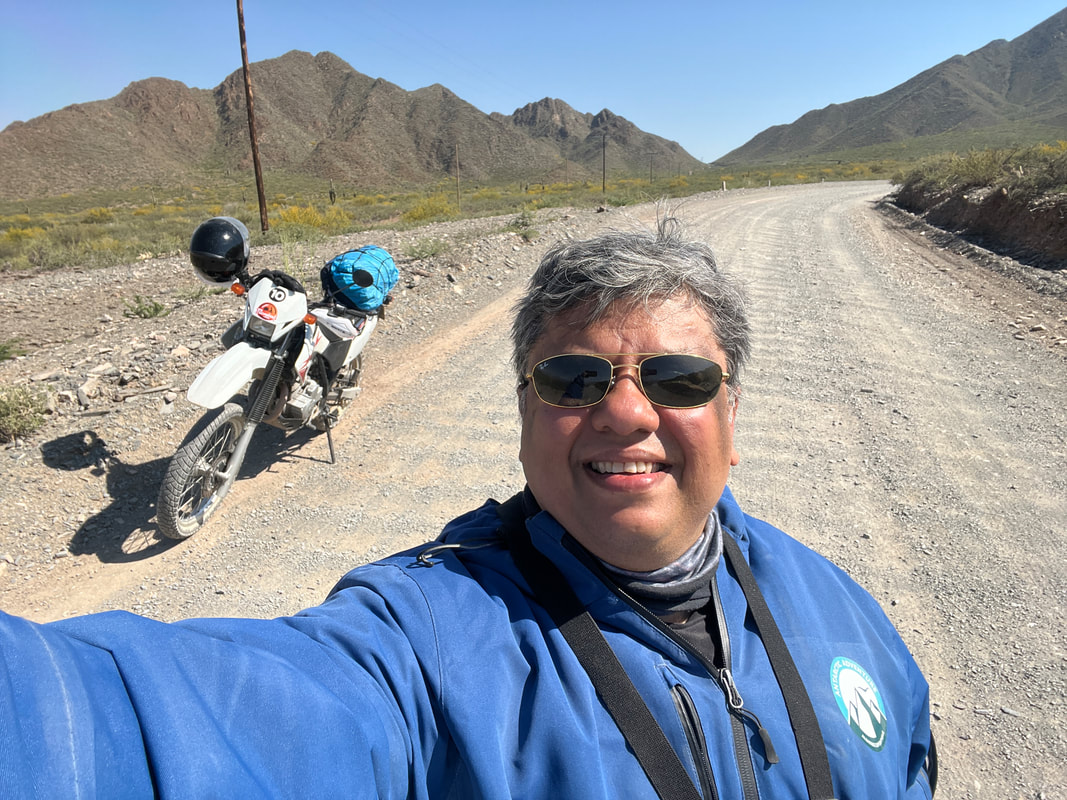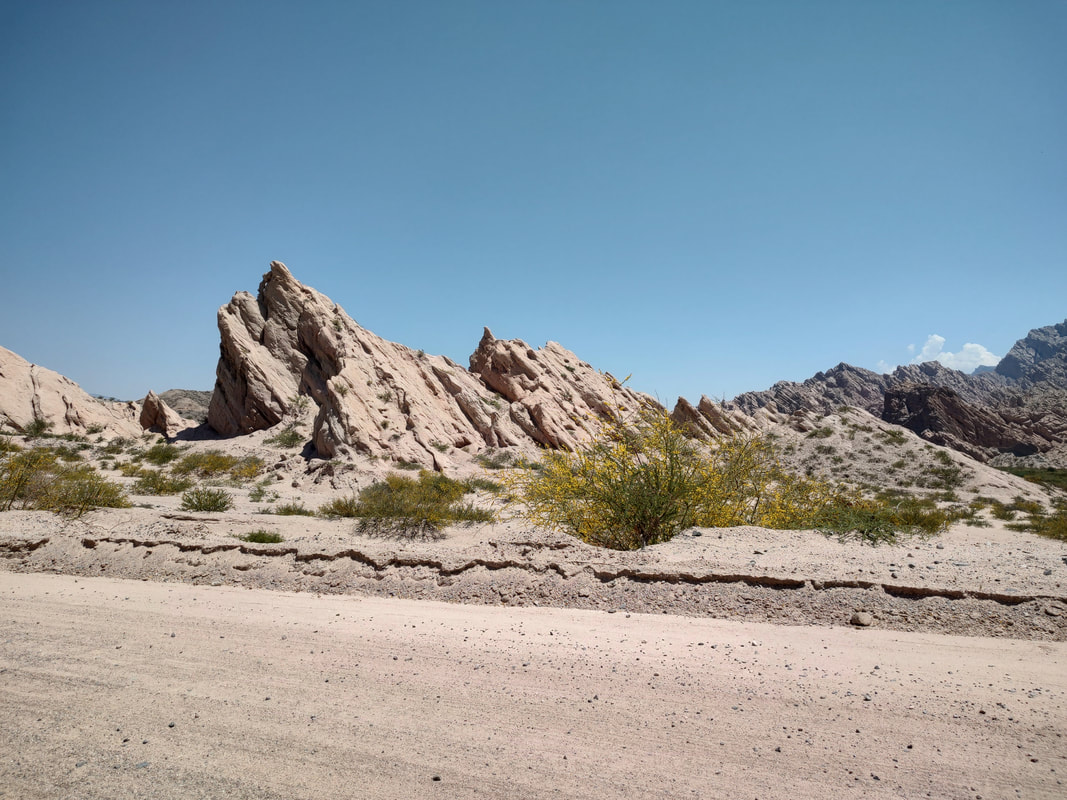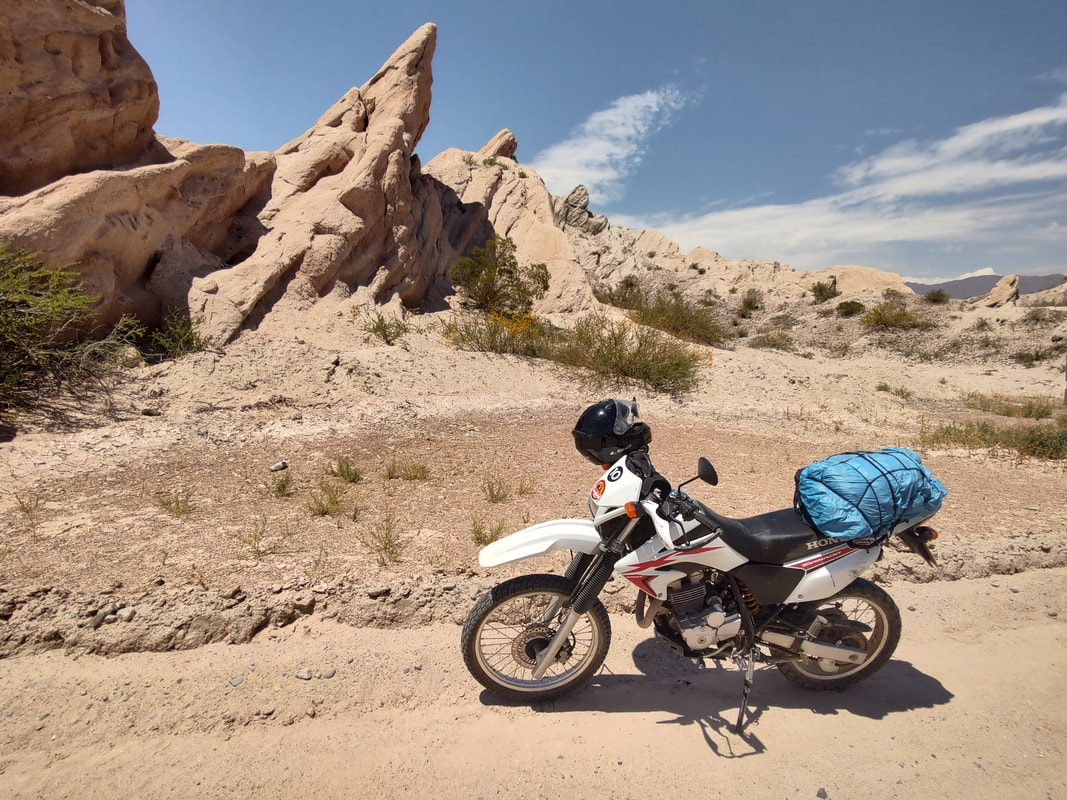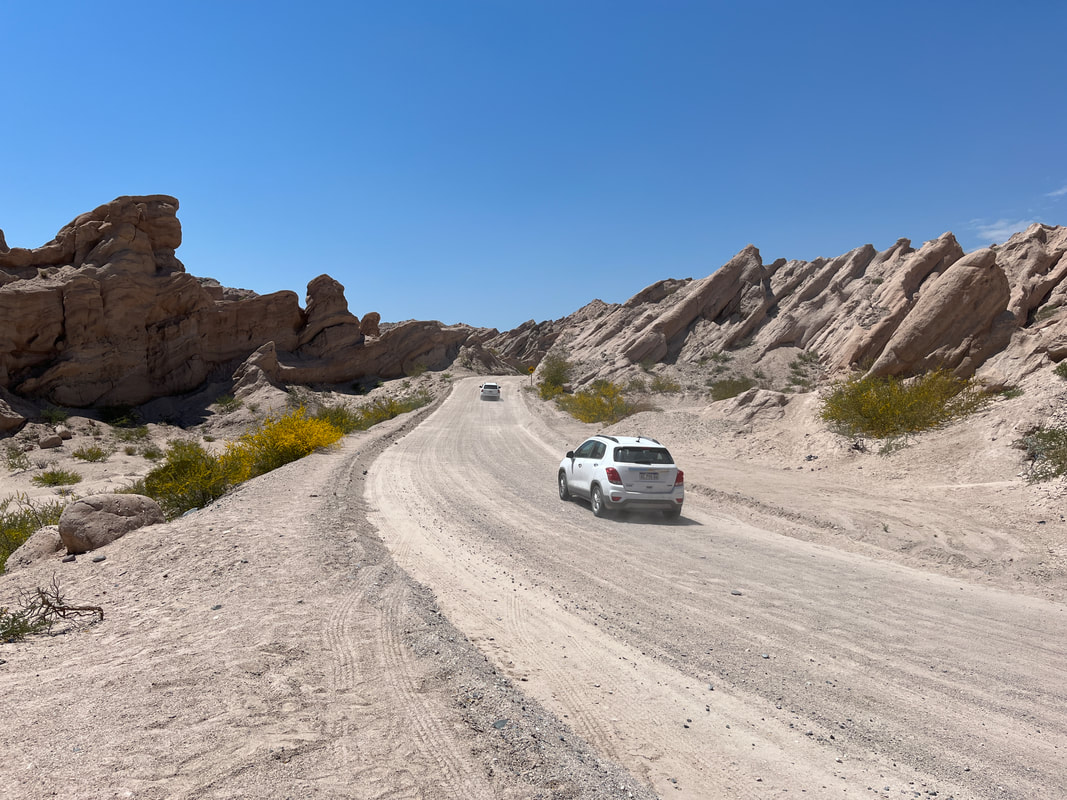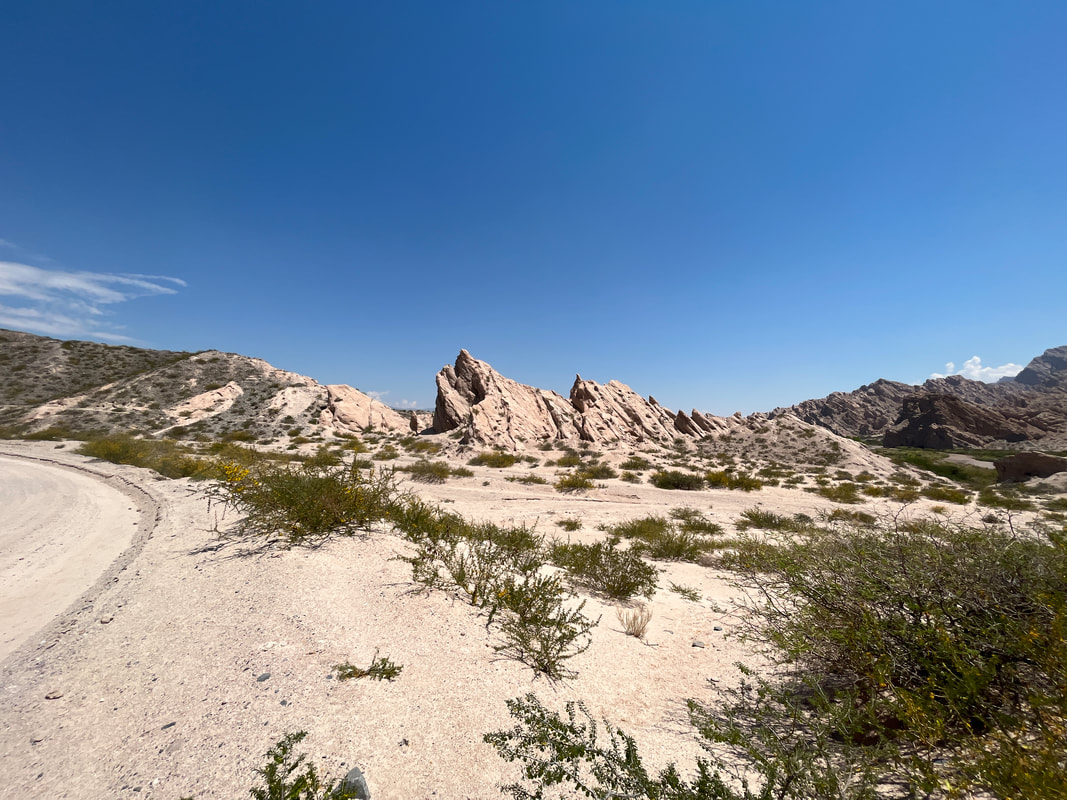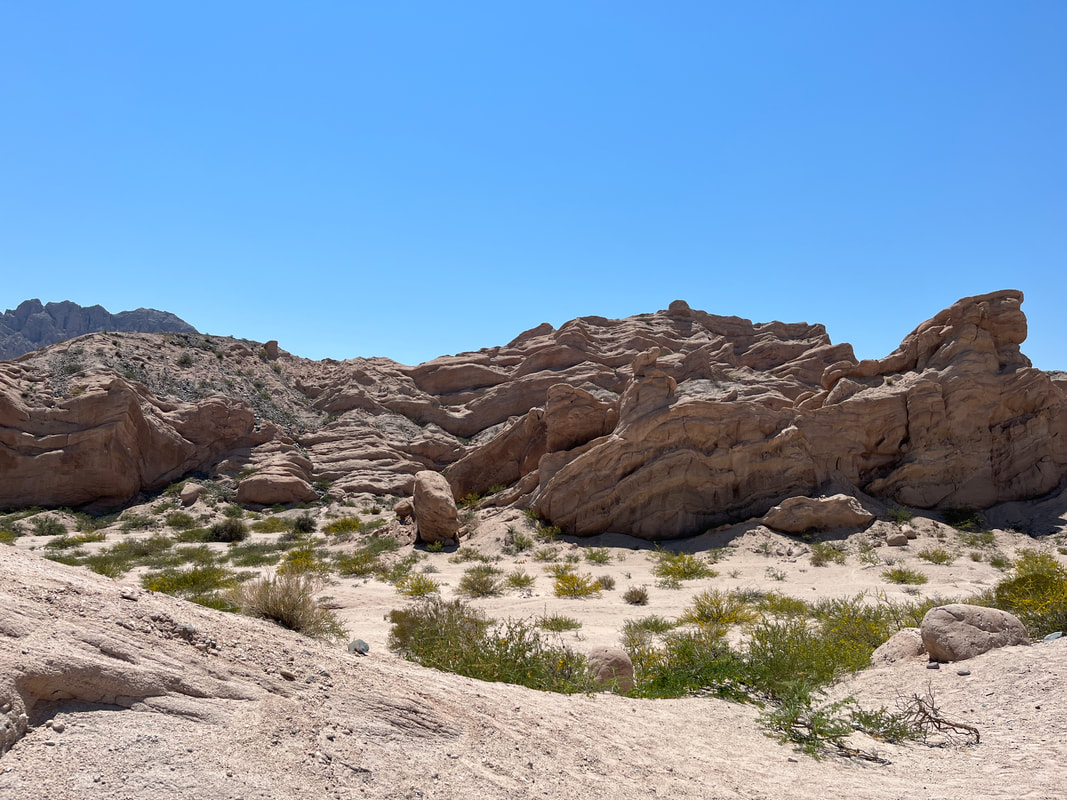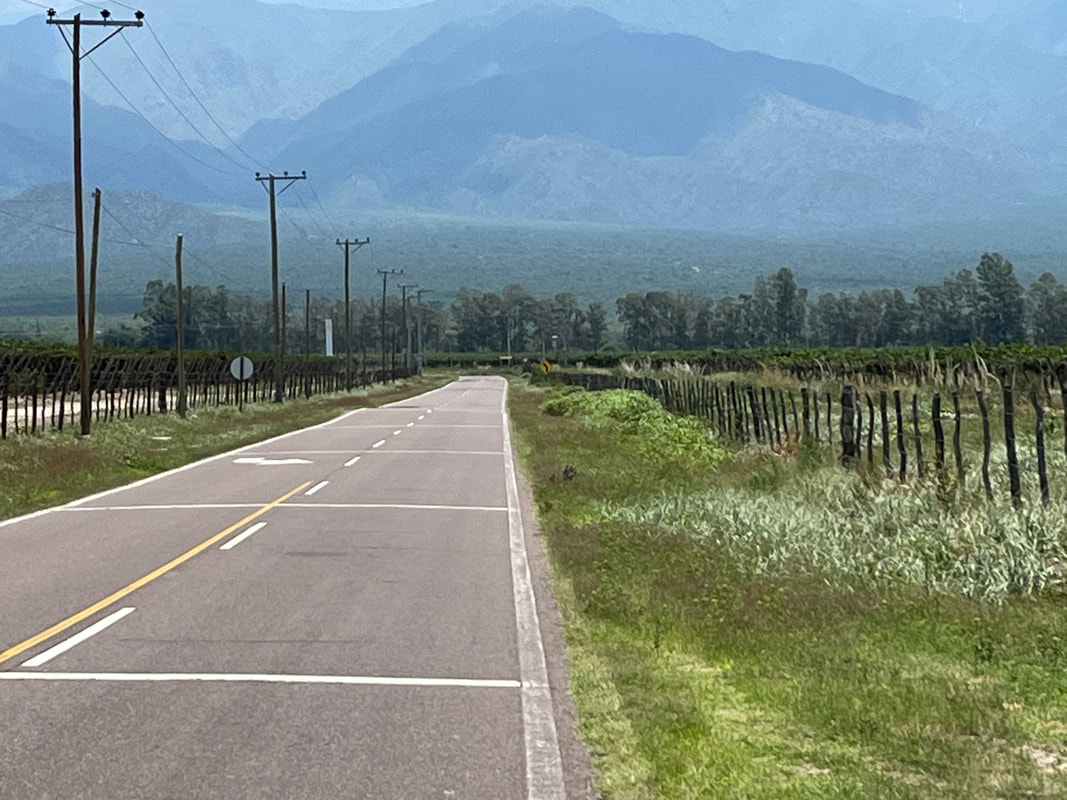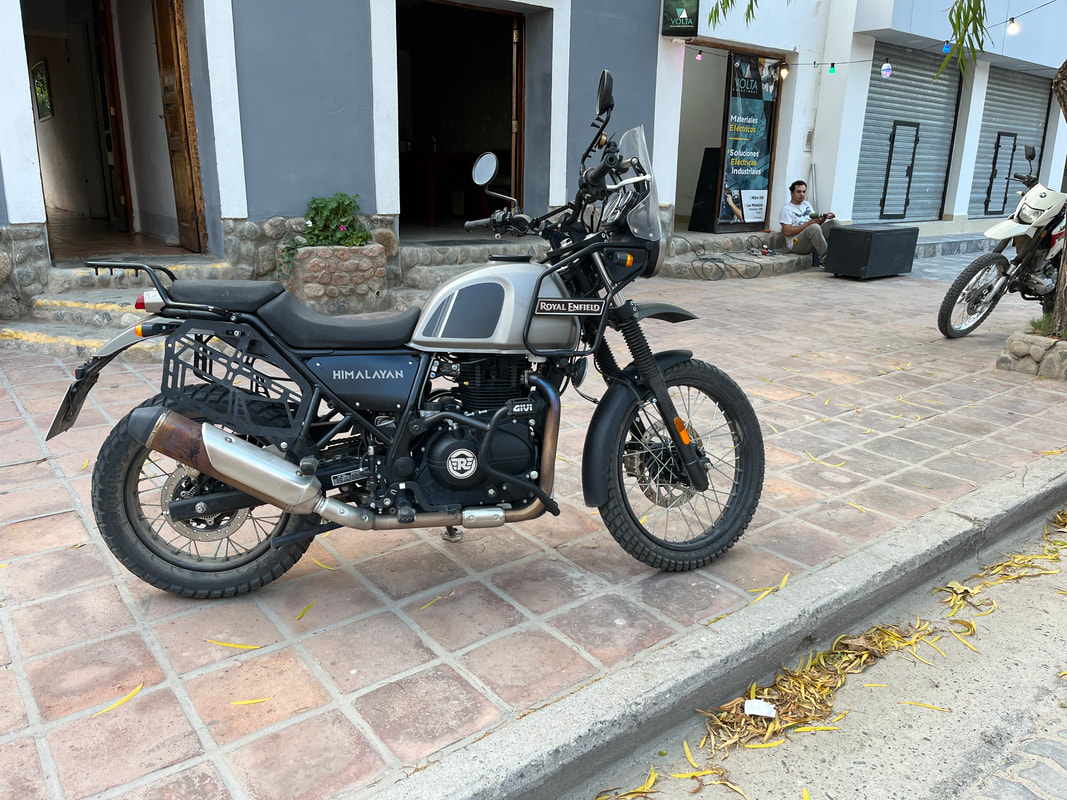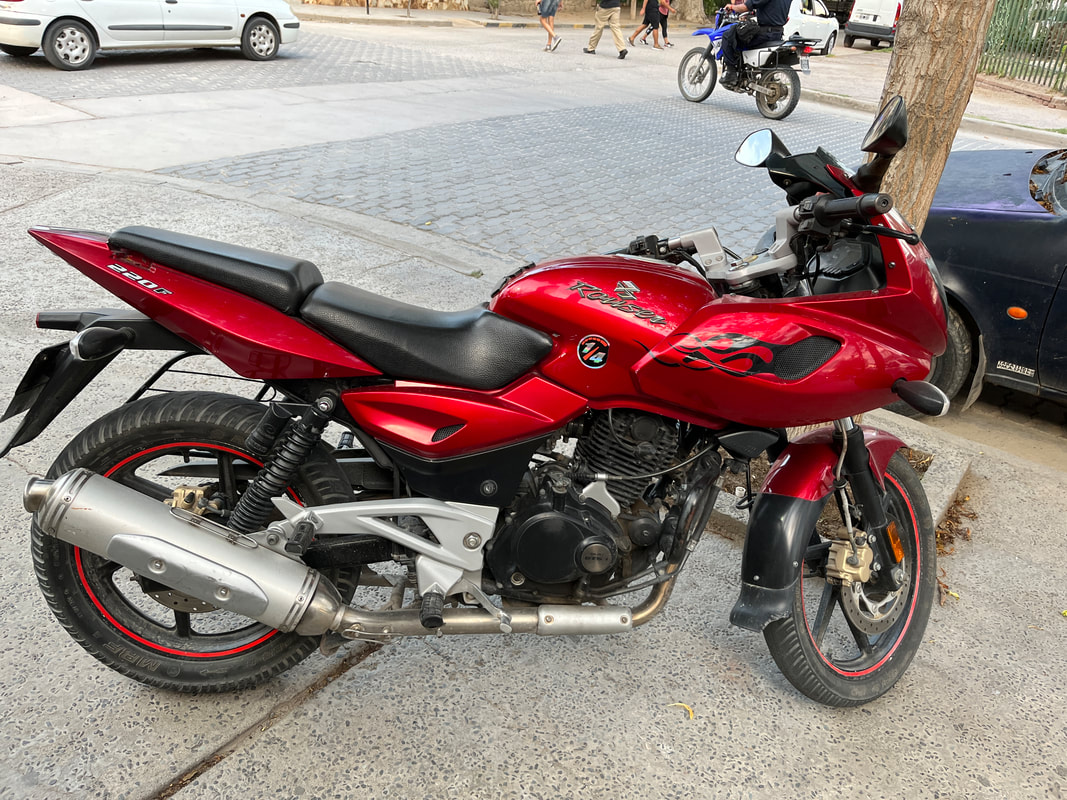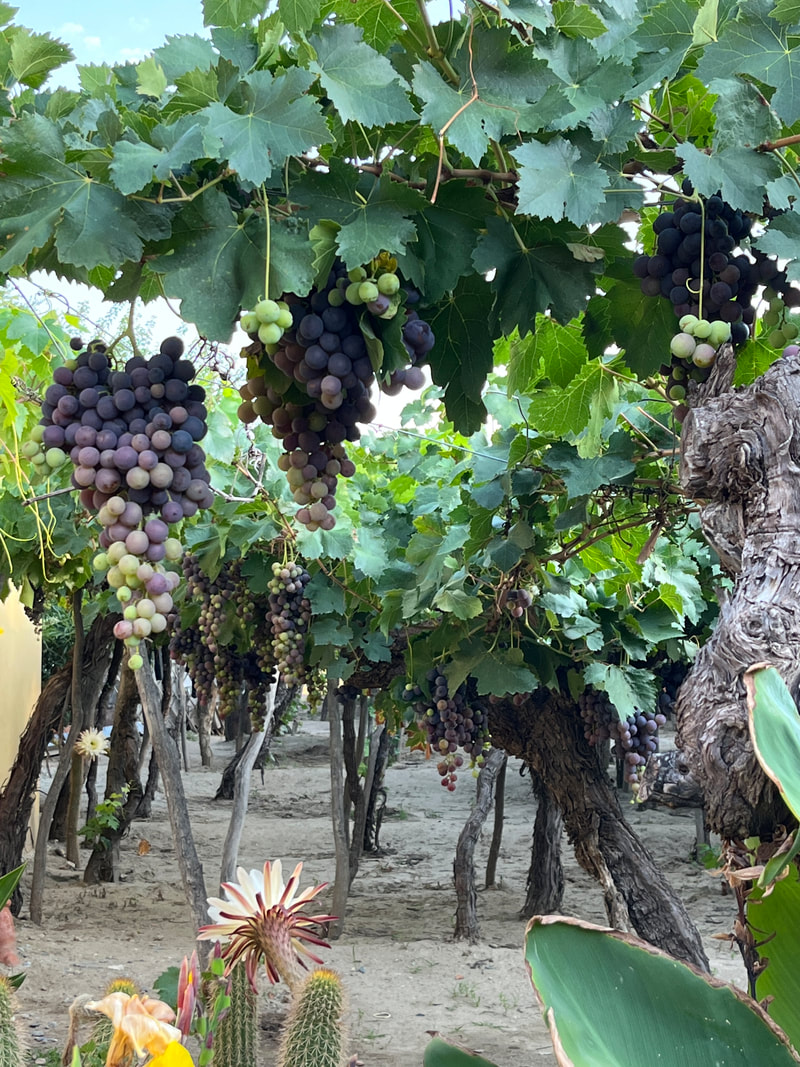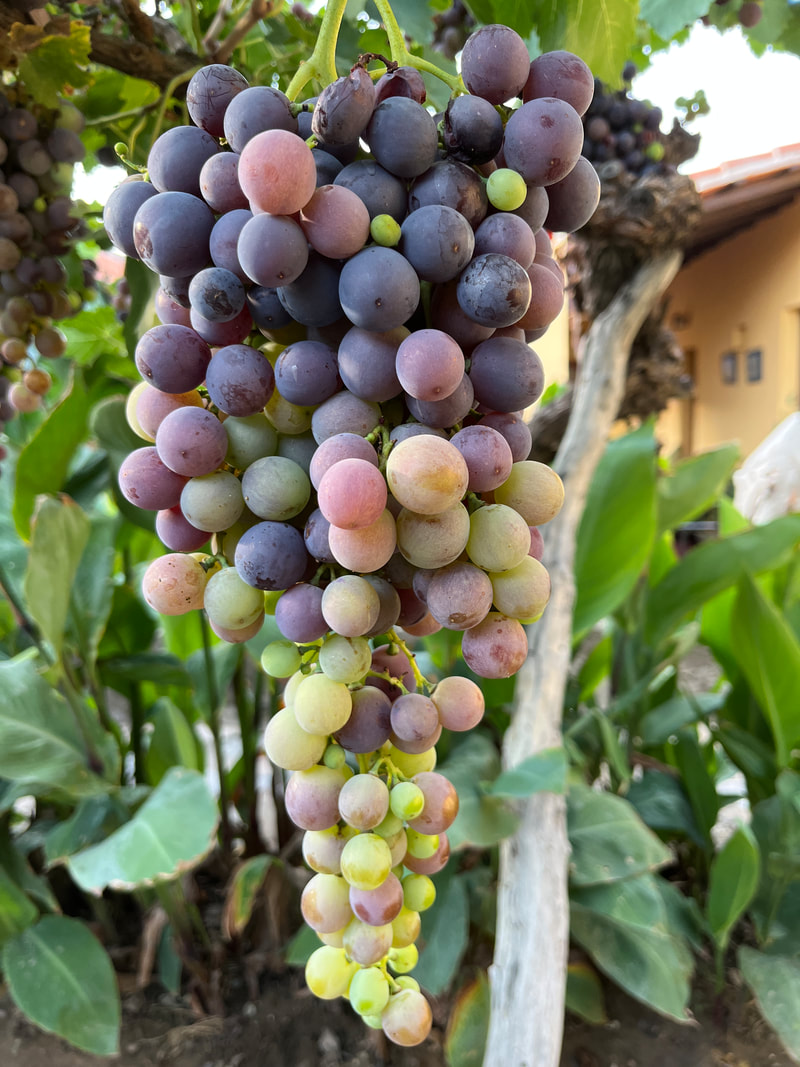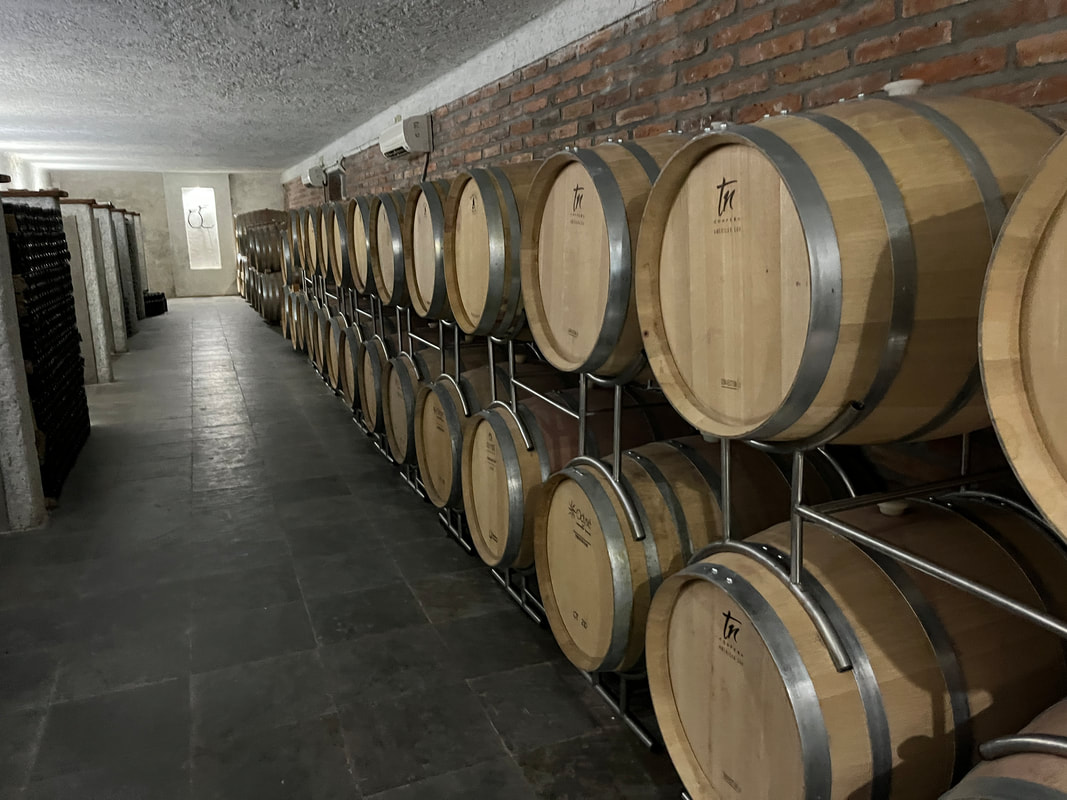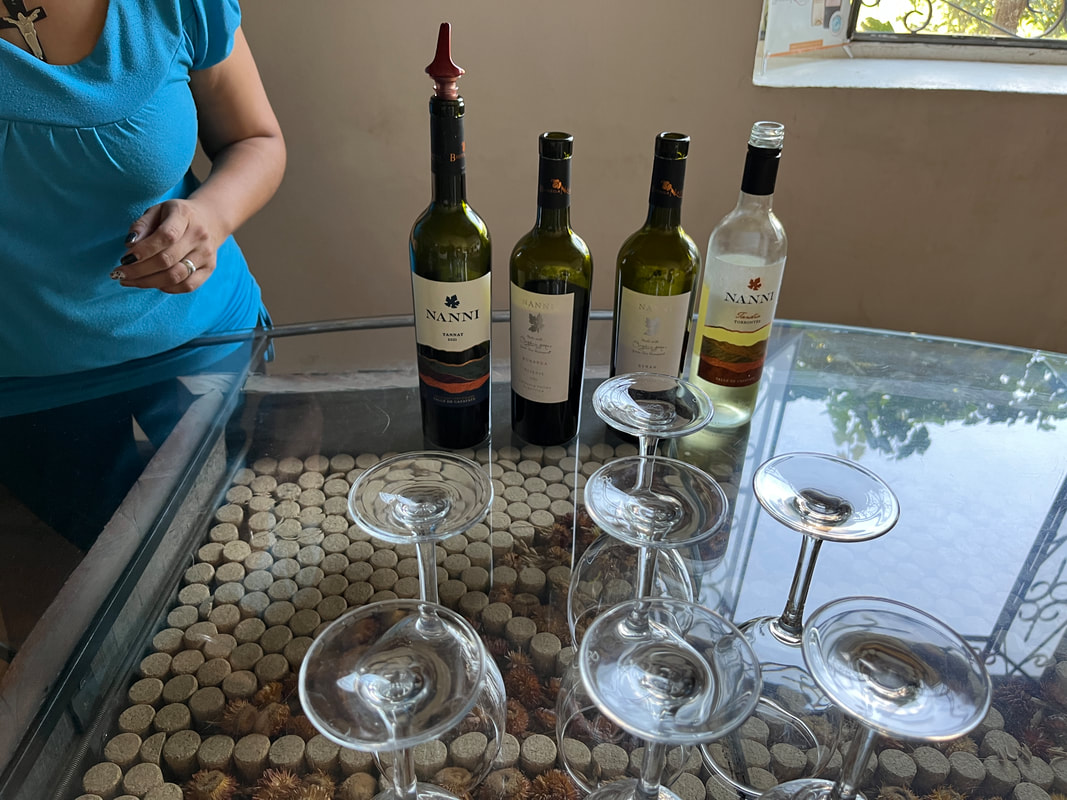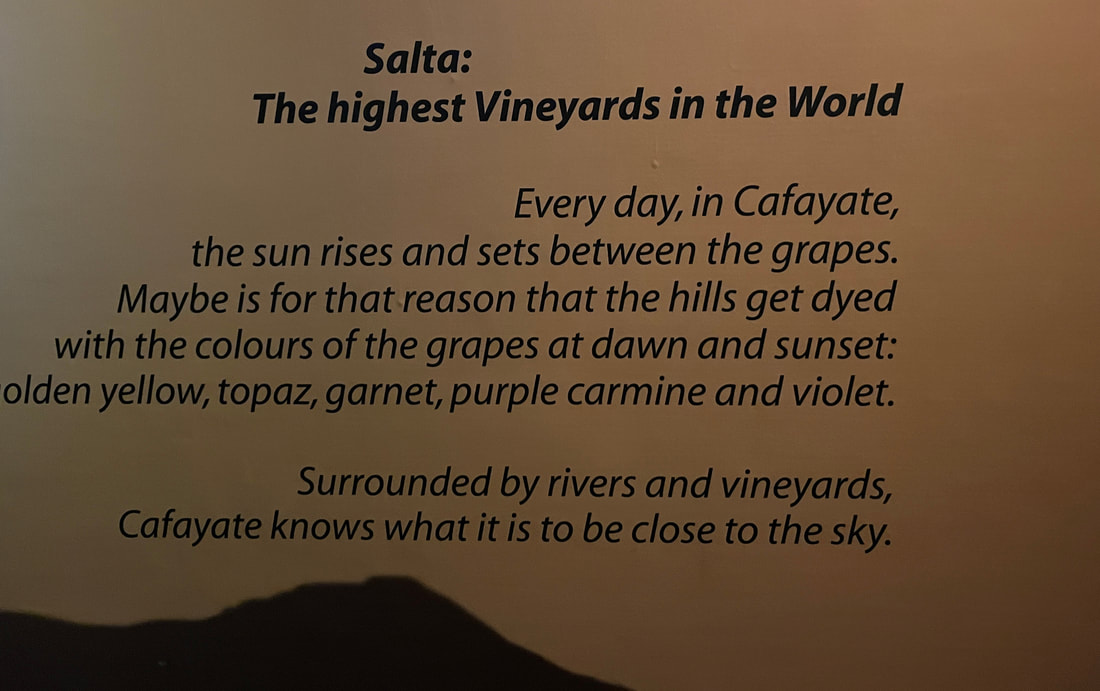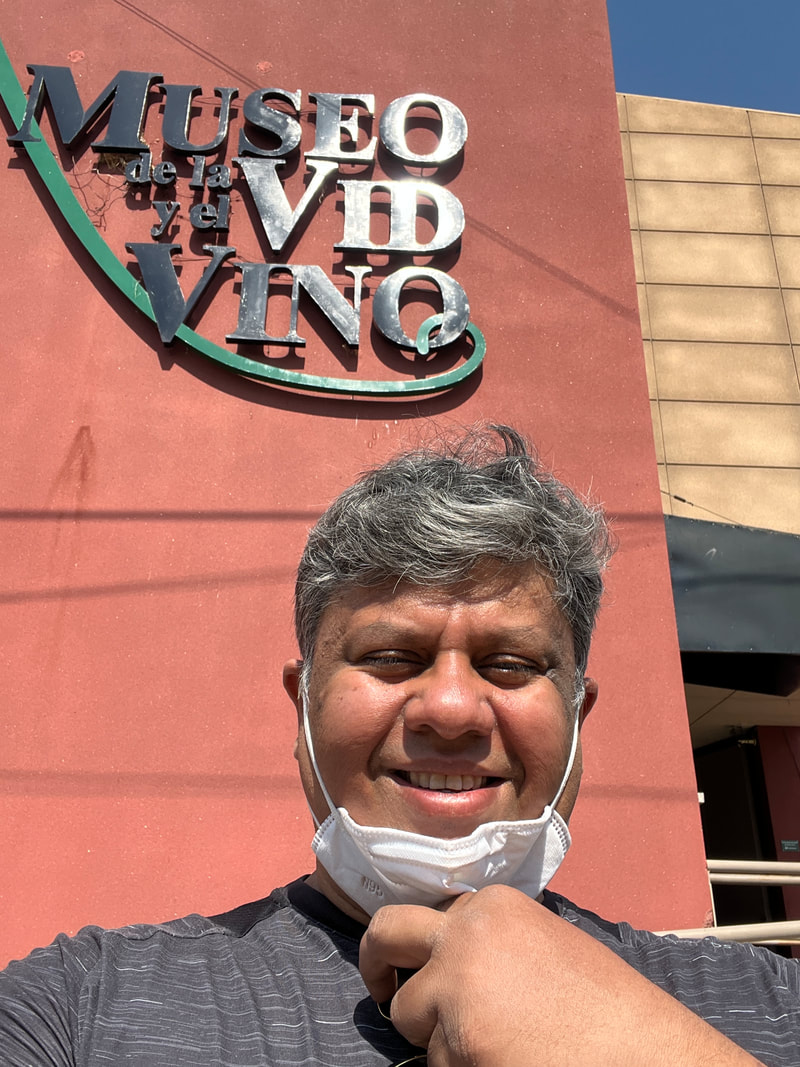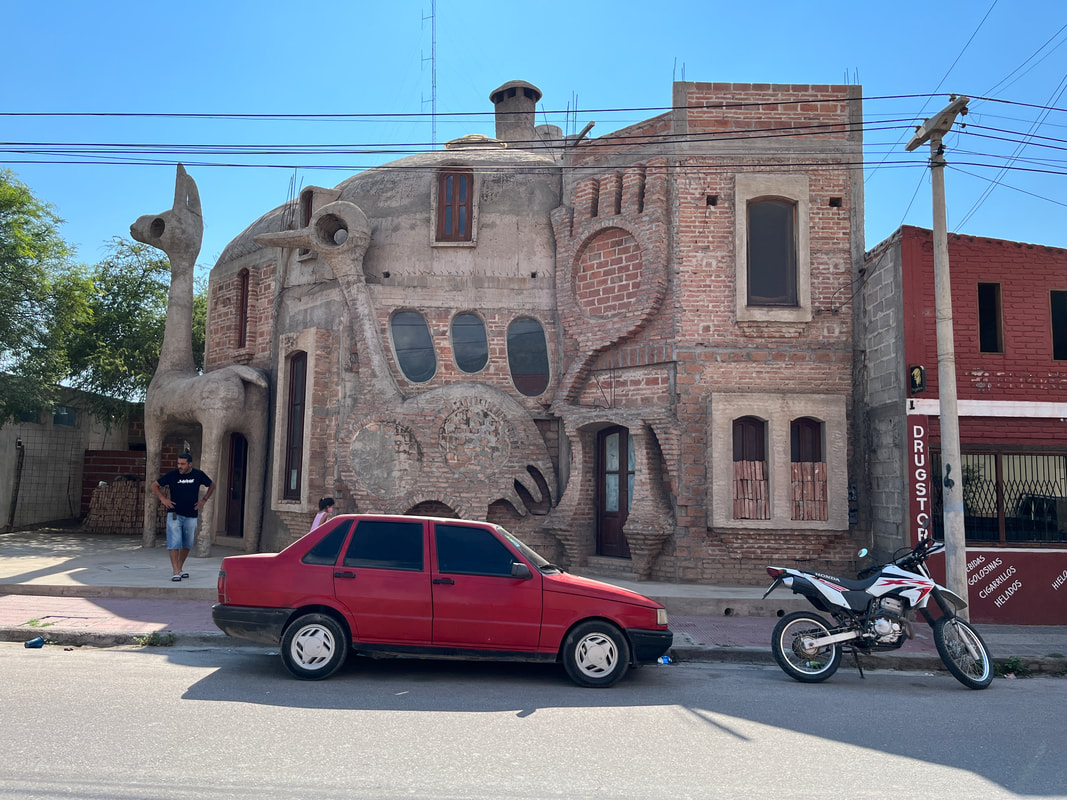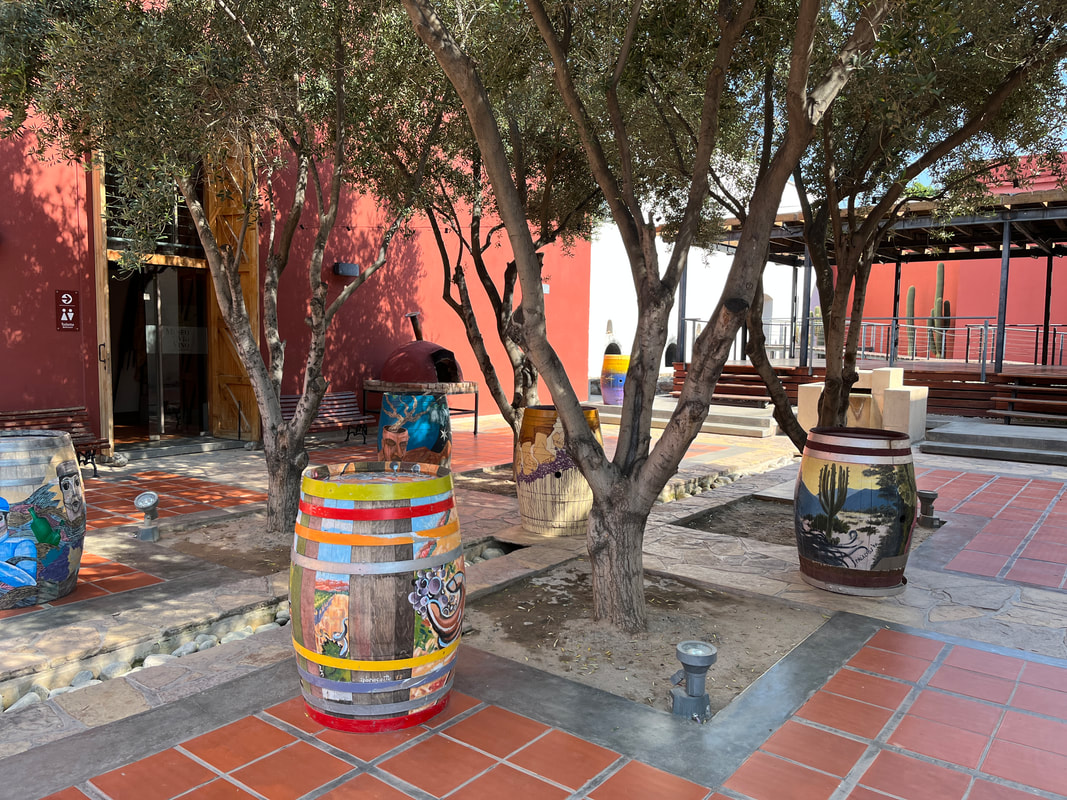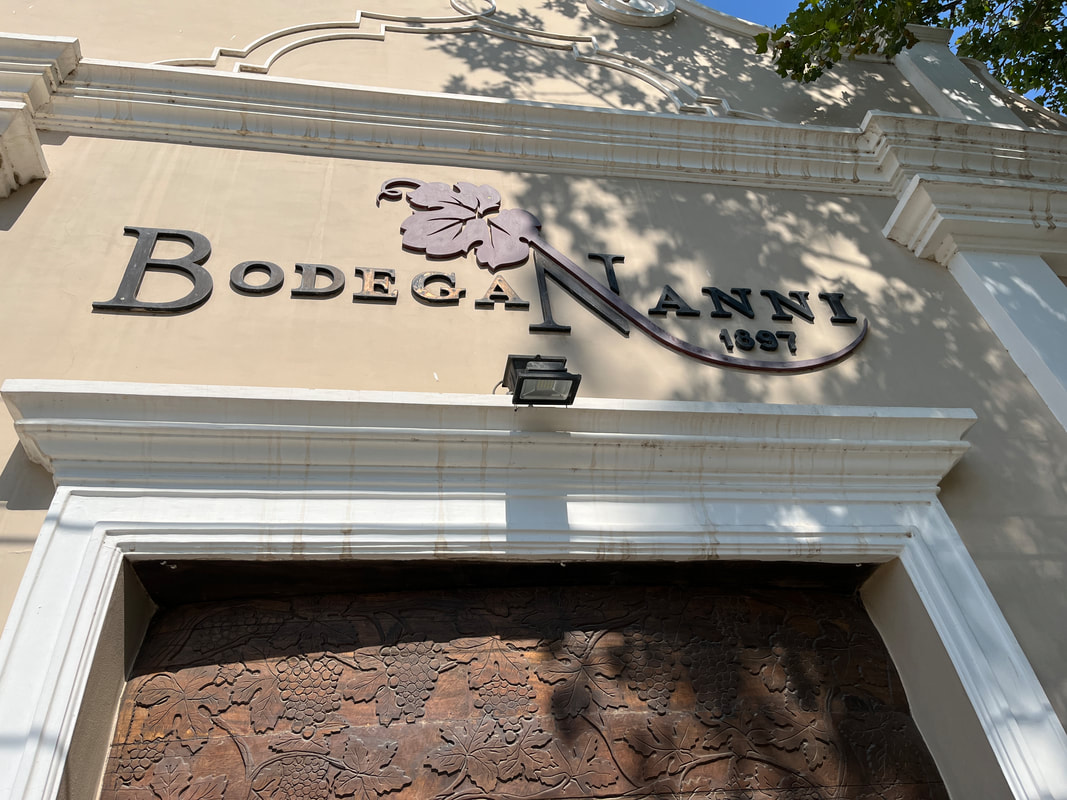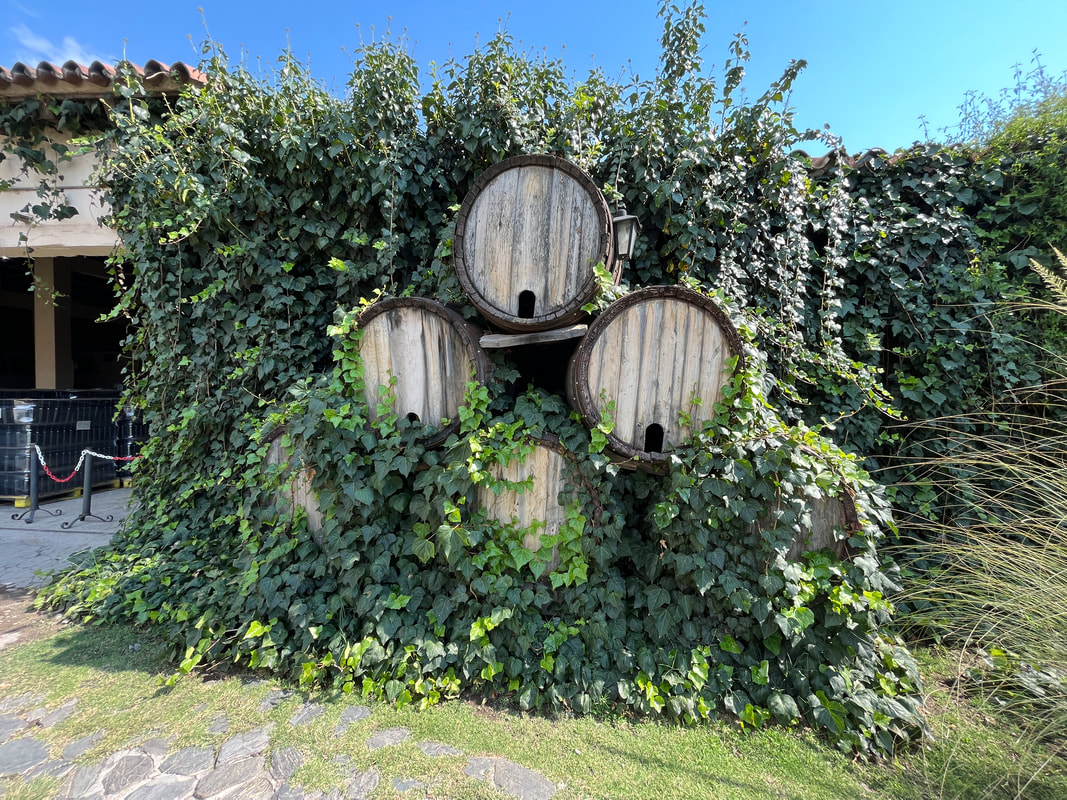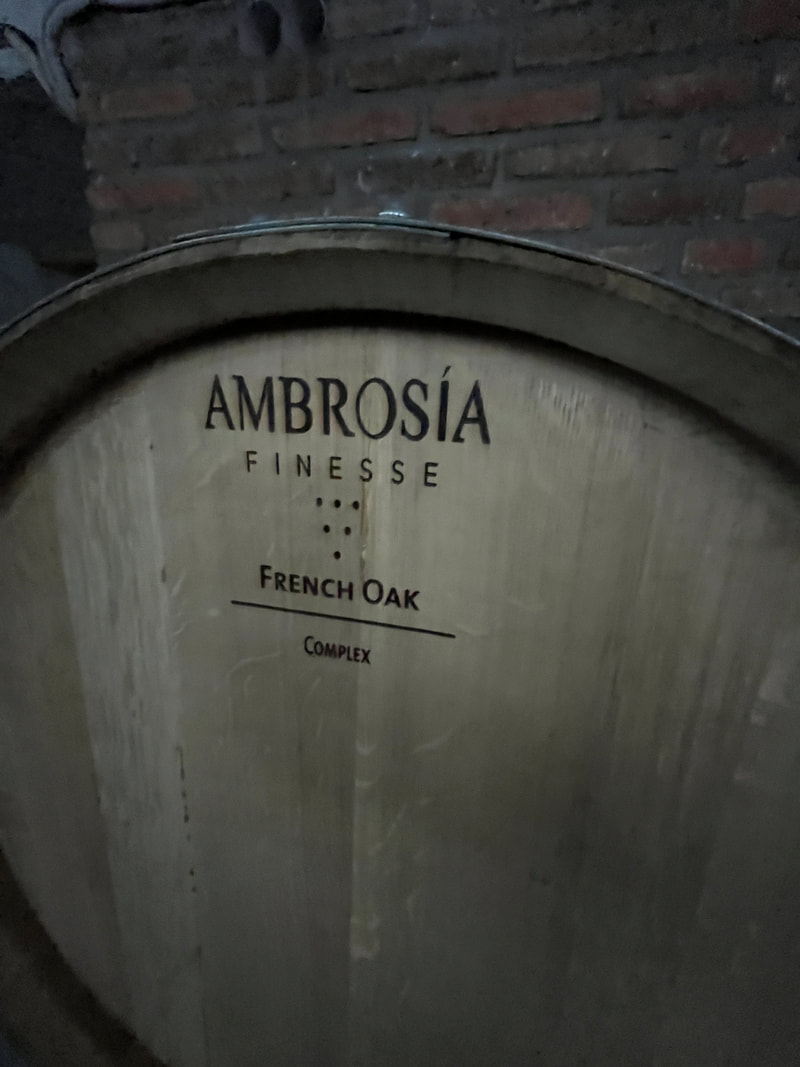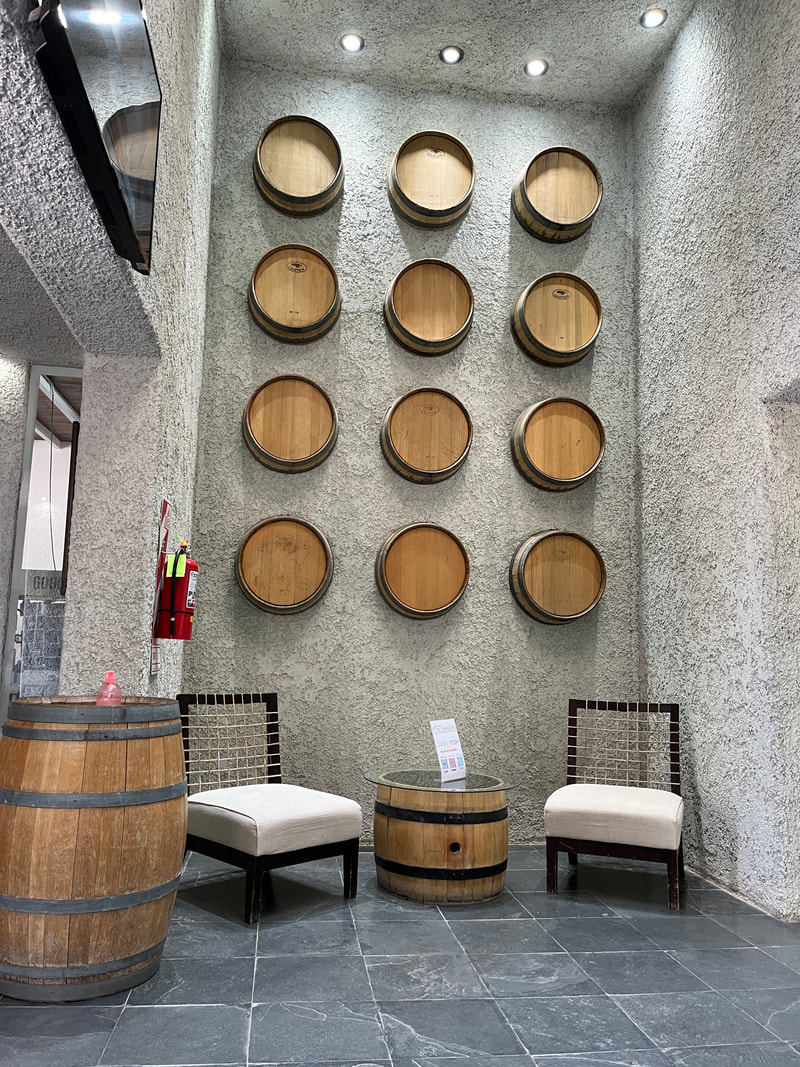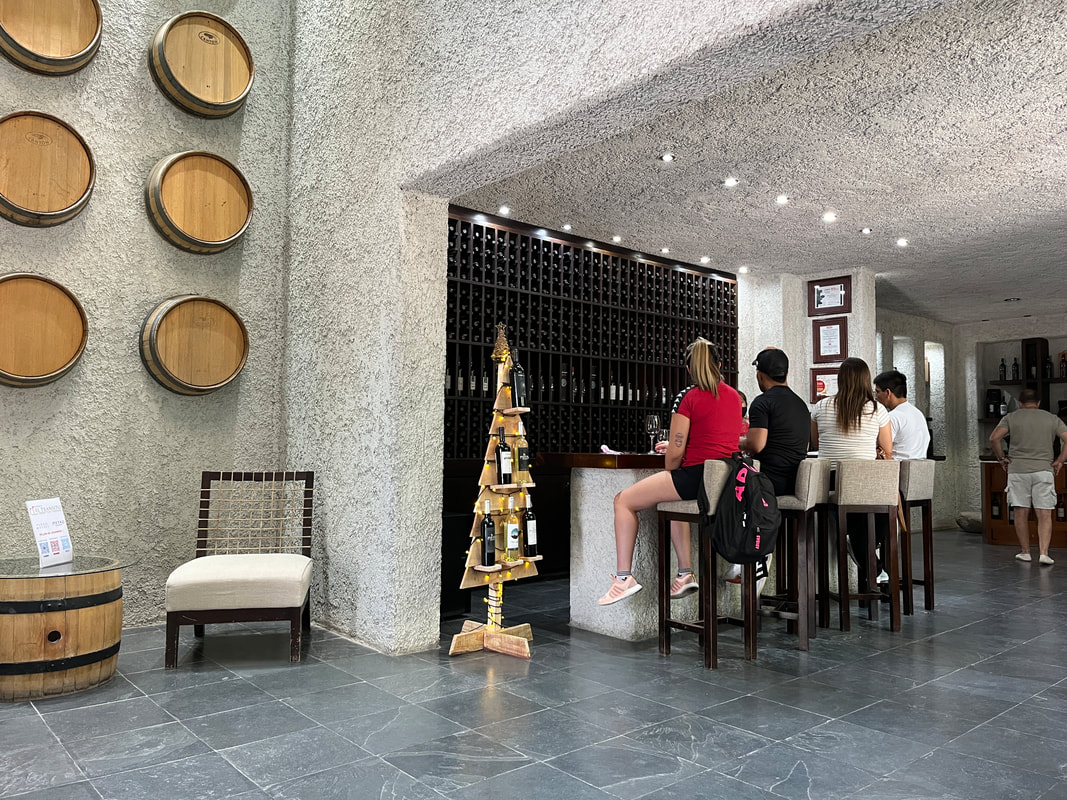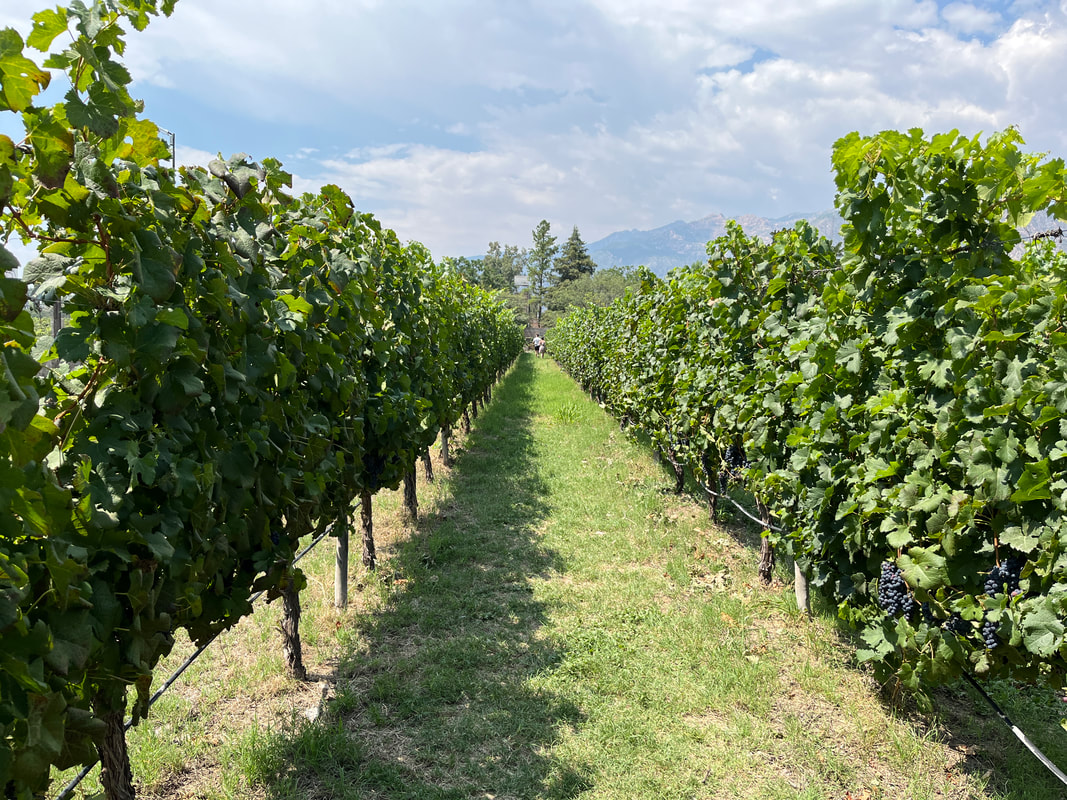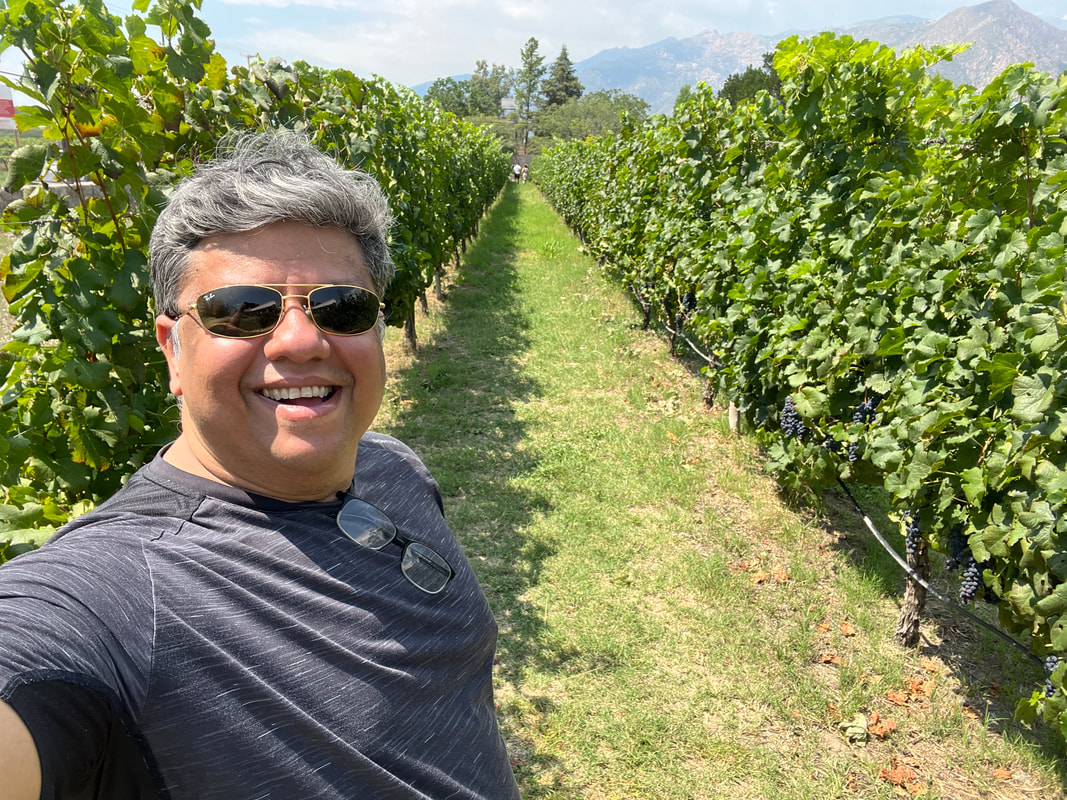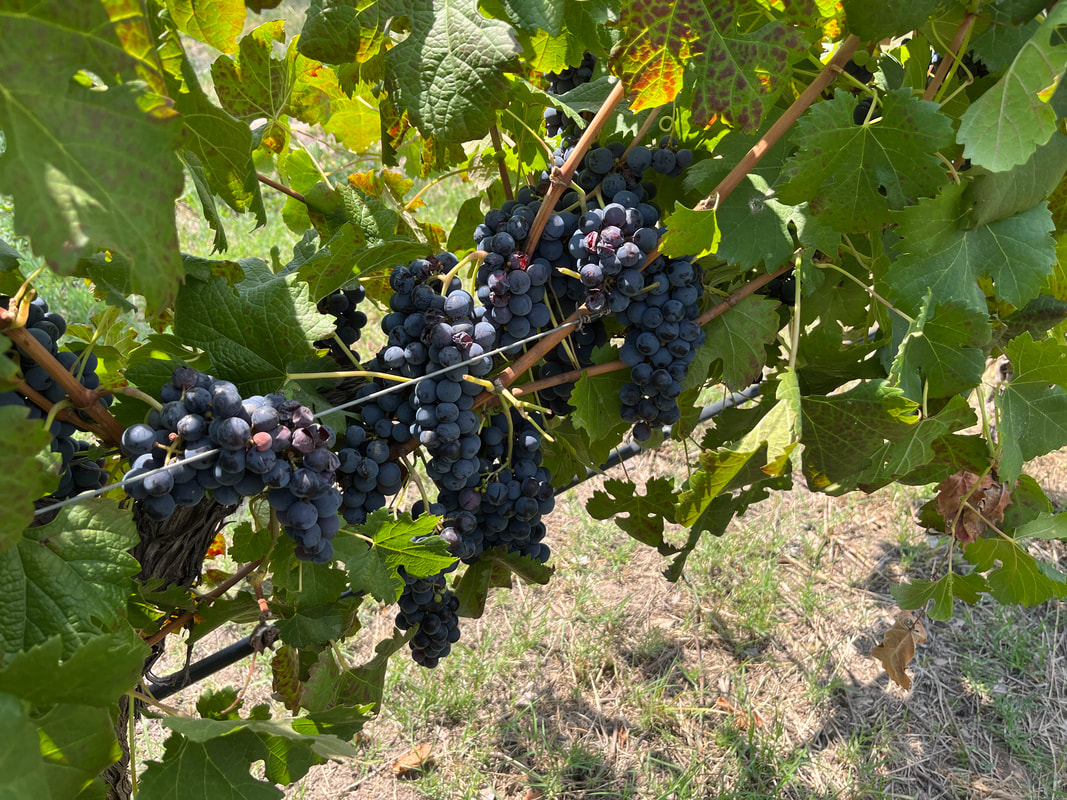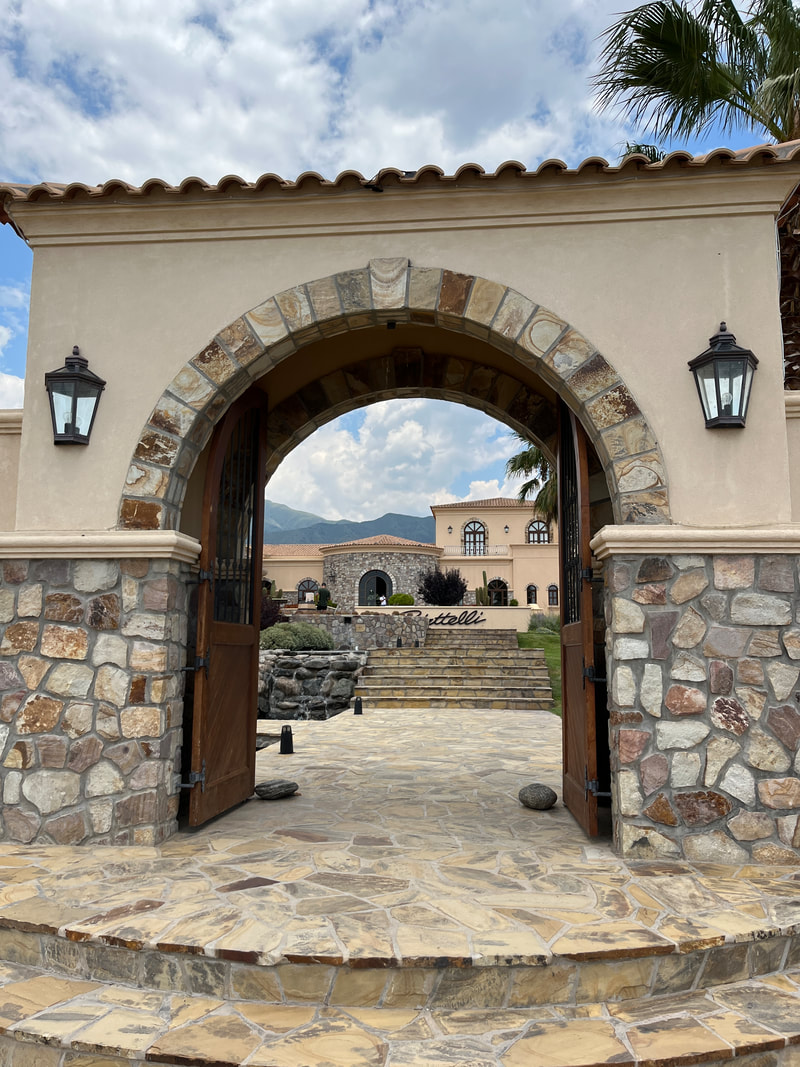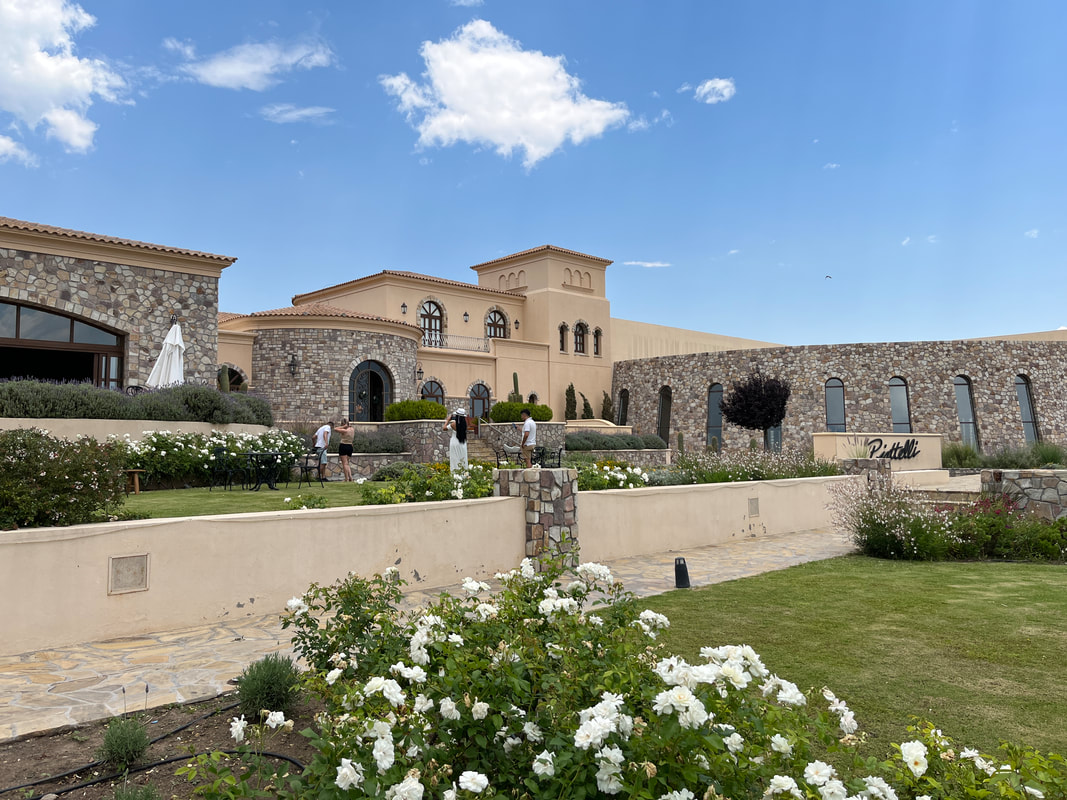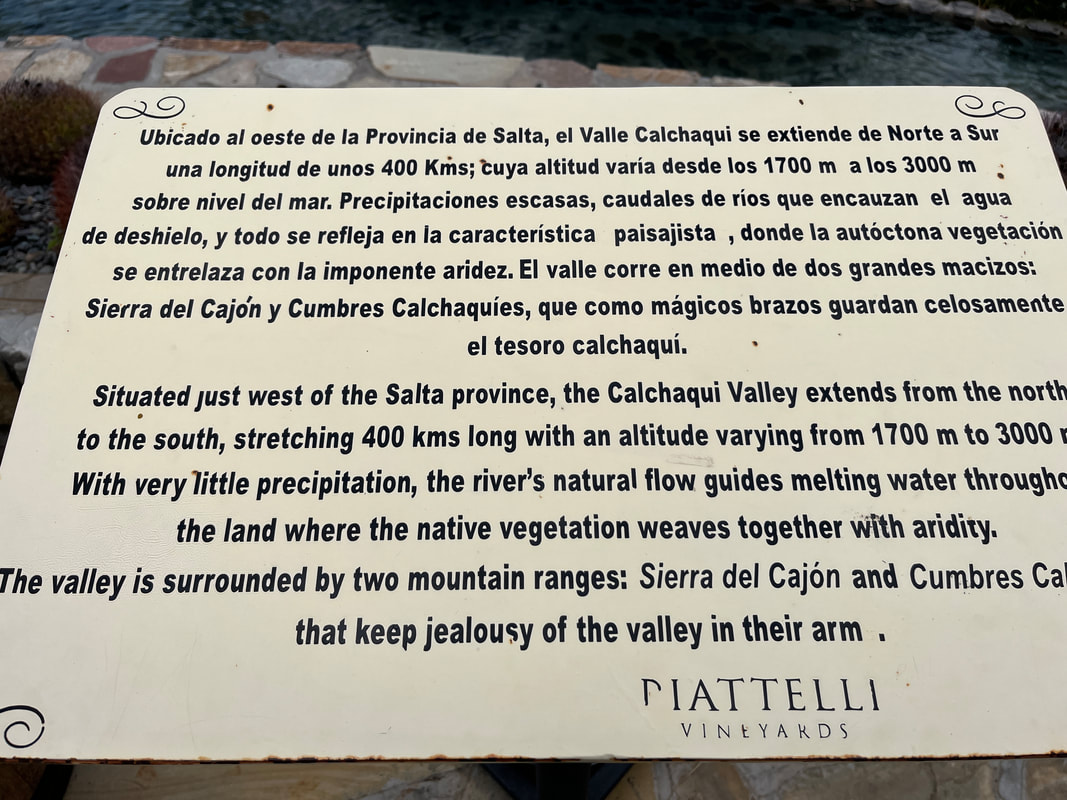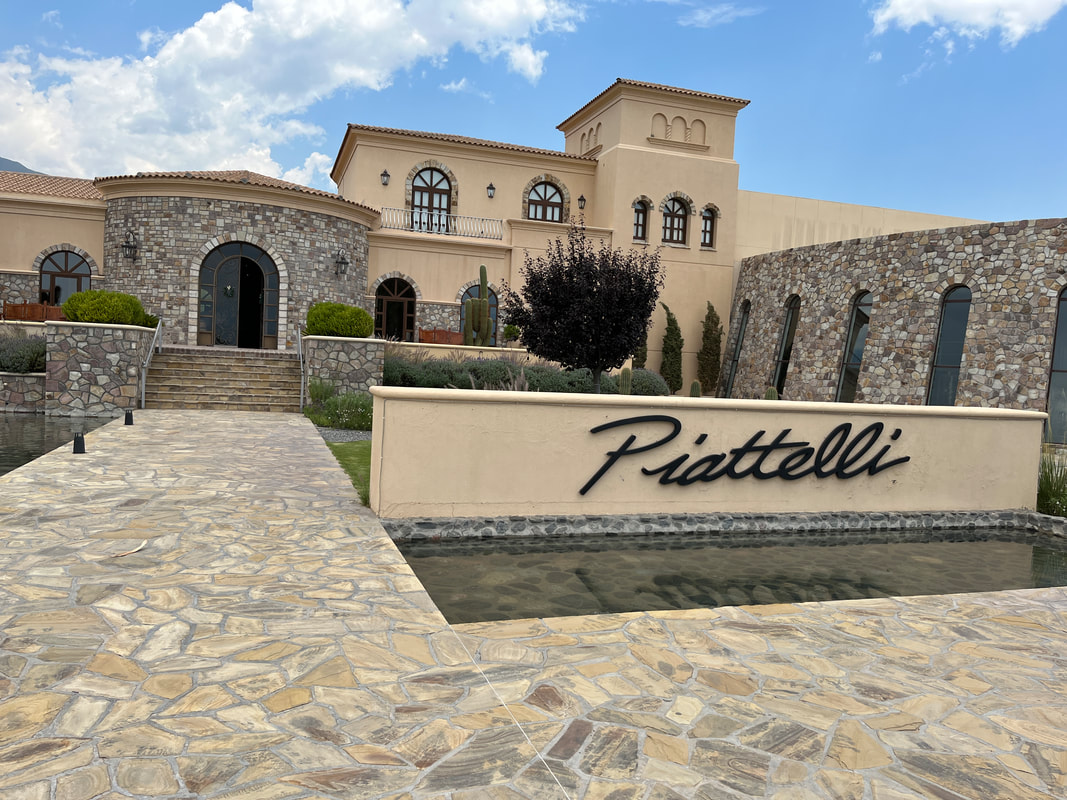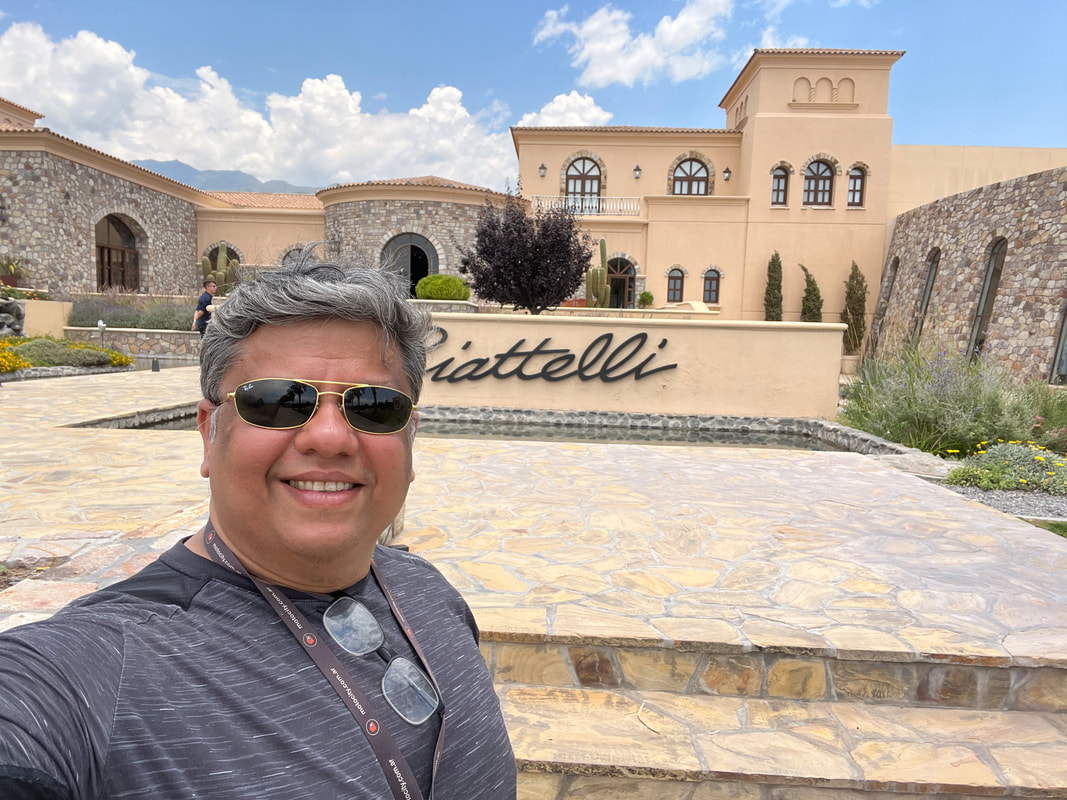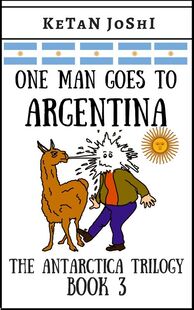Riding the Ruta 40 - Cachi to Cafayete
There is only one road leading out of Cachi and I managed to get lost in that too! And that too with having live GPS maps on my phone! I went to fill petrol and ended up going round and round the little village of Cachi looking for a way out. I must be holding the world record in poor direction finding.
One reason I couldn’t find the highway was that the highway didn’t really look like a highway - it was unpaved and gravelly, like the voice of a country music star. It could follow a route, but the quality was terrible!
I was quite taken aback - this was the Ruta 40! THE ruta 40! That famous road I had mentioned earlier. The one that stretches from one end of Argentina to another and is a legend to drive on. How come it was unpaved?
I was not too bothered - I was on an adventure bike after all… so I had to have a little adventure! Bad roads, water crossings, sand, rocks, gravel - bring them on! WOOHOO!
One reason I couldn’t find the highway was that the highway didn’t really look like a highway - it was unpaved and gravelly, like the voice of a country music star. It could follow a route, but the quality was terrible!
I was quite taken aback - this was the Ruta 40! THE ruta 40! That famous road I had mentioned earlier. The one that stretches from one end of Argentina to another and is a legend to drive on. How come it was unpaved?
I was not too bothered - I was on an adventure bike after all… so I had to have a little adventure! Bad roads, water crossings, sand, rocks, gravel - bring them on! WOOHOO!
The only problem with bad roads is that they make you focus on negotiating the road and you can’t relax and look up at the scenery around you. And the scenery is quite spectacular! Just a little way down from Cachi you have the confluence of the Tintin and Calchaquí rivers, and after that we follow the Calchaquí almost all the way down to Cafayate.
The austere beauty of the region is something crazy. Huge stretches of shrubland, dotted with gigantic Cardones and the giant massifs of the Andes looming in the background. I wondered who could walk amidst those shrubs - they were thorny enough to hurt, and looked very tough to cut through and were tangled enough to trip you up and the soil was gravelly and rough enough to cut skin. The original guys who lived here - or the settlers who came here in the old days - must have been really tough guys!
This region still maintains some of the ‘wild west’ frontier look, because thats exactly what it was - a settlement of the wild frontier. The towns here were raised as part of the settlement of the Spanish forces in northern Argentina, they were later inhabited by the Jesuit missions, which raised churches and some houses that still stand and where time seems to have stopped.
Even the traffic jams are different! I saw the whole road was jammed like commuter traffic in a big city - but instead of cars and buses, it was jammed with horses! The local ranchers were taking a whole bunch of horses from somewhere to somewhere, and there were so many horses that they covered the whole road!
And they didn’t seem to be used to traffic either. They raised their ears and cocked their tails and rolled their eyes at me. The sight of a fat guy in a bright blue parka on a bright white skinny adventure bike seemed to shock them!
Even the traffic jams are different! I saw the whole road was jammed like commuter traffic in a big city - but instead of cars and buses, it was jammed with horses! The local ranchers were taking a whole bunch of horses from somewhere to somewhere, and there were so many horses that they covered the whole road!
And they didn’t seem to be used to traffic either. They raised their ears and cocked their tails and rolled their eyes at me. The sight of a fat guy in a bright blue parka on a bright white skinny adventure bike seemed to shock them!
The road was quite bad though. Not ‘bad bad’ like the one in Ladakh or Spiti or other places in the high Himalayas where you are often saying to yourself - screaming, rather - ‘AAAAARRGHH - THIS IS IT! GOODBYE CRUEL WORLD…..’. There are no holes and rocks in the road, or steep drops into deep ravines, or rocks falling on your head, or deep water crossings.
No, this was bad as in ‘unfinished’. There wa absolutely no tarmac - the entire road was gravel and sand - and even the gravel road had these weird undulations all across it, so it seemed like you are permanently on a rumbler strip and being shaken up like a paint can in an agitator.
I simply stood up on the footpads and rode - that is a normal technique to spare your spine the shocks of the road, increase the stability of the bike by lowering your centre of gravity, thus making you able to ride at speed on bad roads - and it enables you to get blood flowing in your butt as well, preventing ‘numb butt’ and ‘numb nuts’ syndrome!
It seemed to me that I did more than half the journey standing up! It was exhausting! Like doing ‘Leg day’ in the gym.
No, this was bad as in ‘unfinished’. There wa absolutely no tarmac - the entire road was gravel and sand - and even the gravel road had these weird undulations all across it, so it seemed like you are permanently on a rumbler strip and being shaken up like a paint can in an agitator.
I simply stood up on the footpads and rode - that is a normal technique to spare your spine the shocks of the road, increase the stability of the bike by lowering your centre of gravity, thus making you able to ride at speed on bad roads - and it enables you to get blood flowing in your butt as well, preventing ‘numb butt’ and ‘numb nuts’ syndrome!
It seemed to me that I did more than half the journey standing up! It was exhausting! Like doing ‘Leg day’ in the gym.
The landscape slowly changed to a surreal moon landscape towards the Calchaquí River Valley.
The Calchaqui Valley is a natural depression and the Calchaqui River runs down it. At Angastaco the valley takes a sharp turn, heading east, where the river meets the mountain range known as Sierra de La Apacheta.
The Calchaqui Valley is a natural depression and the Calchaqui River runs down it. At Angastaco the valley takes a sharp turn, heading east, where the river meets the mountain range known as Sierra de La Apacheta.
The Sierra de La Apacheta range is folded and its southern tip blocked the valley like a large dam, and so the river forms a lake upstream, and the overflows over it, forming the narrow gorge of Paso La Flecha - The place of the arrows’. It looked like I’d landed on the Moon! In fact, I had arrived at the ‘Quebrada de las Flechas ‘ (Ravine of the Arrow heads) – a national monument and one of the show-stopper attractions along Route 40 with it’s sharp rocks and sandstone cliffs. The sandstone rocks have been shaped by the wind and water into sharp cliffs, which look like arrow heads! It is a stunning natural formation in the ‘Valles Calchaquíes’ - eroded cliffs in tones of white, gray and beige that jut out of the terrain in overlapping layers of strata that resemble gigantic arrowheads.
This is regarded as one of the Top 10 Sights of Ruta 40. And therefore protected as a ‘Natural Monument’.
This is regarded as one of the Top 10 Sights of Ruta 40. And therefore protected as a ‘Natural Monument’.
I finally reached Cafayate town and made my way to my hotel
I went to explore the town square in the evening - determinedly walking in the wrong direction as usual, before turning back towards the correct direction. The only advantage of my sally in the wrong direction was that I saw a little slice of home! A brand new Royal Enfield Himalayan! I love this new model from RE! And there was a bike from ‘Bajaj auto’ (One of India’s largest two-wheeler makers) as well! I was so happy to see Indian products in such a remote corner of the world. India shining!
The next day was dedicated to exploring the wine heritage of Cafayate!
Winemaking has a long tradition in Salta. Jesuit priests brought the first vines from Peru in the eighteenth century to the town of Molinos.
Winemaking has a long tradition in Salta. Jesuit priests brought the first vines from Peru in the eighteenth century to the town of Molinos.
Between the late sixteenth and the eighteenth centuries, the Jesuits and Franciscans founded their missions along the northern border regions of the Spanish viceroyalty of New Spain, which today comprises Mexico and portions of the American Southwest. The focus of these religious orders was to promote evangelization and protect the physical boundaries of the empire. Members of the Society of Jesus also established economic enterprises that played a key role in the Jesuits’ and the Spanish crown’s successful expansion into northeastern New Spain. The Jesuits became involved after 1598 in the lucrative business of winemaking because it served many purposes.
Wine was an essential part of the sacrament of the Eucharist - the ‘holy communion’ where, during the mass the priest consecrates bread and wine, the elements of the Eucharist, which are transubstantiated into the body and blood of Christ. Thus wine and that wafer of bread were an essential element of Christianity and every church needed wine every sunday! And of course, if there is wine available then why not drink it at every meal? Salut!
But it was very expensive to import the wine from far away. It made a lot of sense to grow your own grapes and make your own wine.
It also gave an excellent excuse to own land and put down roots - literally. It gave the locals employment and money and a way to integrate into christian society. It created a lucrative and profitable product which could form the bedrock of local economy. And it created addiction - a useful thing to enslave the local people with.
Getting boozed up and feeling holy at the same time - what could be better?
It also gave an excellent excuse to own land and put down roots - literally. It gave the locals employment and money and a way to integrate into christian society. It created a lucrative and profitable product which could form the bedrock of local economy. And it created addiction - a useful thing to enslave the local people with.
Getting boozed up and feeling holy at the same time - what could be better?
The Cafayate wine area is one of the highest places in the world that is suitable for viticulture, as the majority of the region’s vineyards are located at 1700m above sea level. The altitude apparently affects both the climate and the terroir!
Wines from the Cafayate wine is perhaps one of the best produced in Argentina; Torrontes Rioja and Malbec are the most popular and high-quality varieties from Cafayate.
And what better place to learn about the wines and wine-history of the place, than a museum dedicated to wine?
It was called The Museum of the Vine and Wine (Museo de la Vid y el Vino) and I went off to check it out. It was a very nice building …modern and colourful. I parked my bike and went to buy a ticket.
Wines from the Cafayate wine is perhaps one of the best produced in Argentina; Torrontes Rioja and Malbec are the most popular and high-quality varieties from Cafayate.
And what better place to learn about the wines and wine-history of the place, than a museum dedicated to wine?
It was called The Museum of the Vine and Wine (Museo de la Vid y el Vino) and I went off to check it out. It was a very nice building …modern and colourful. I parked my bike and went to buy a ticket.
The museum was very nice - unexpectedly nice! This impressive museum gives a good introduction to the area’s wine industry. The atmospheric first section, which tells the story of wine through a series of poems and images, is particularly appealing.
Cafayate was filled with big and small wineries which all offered wine tasting at very reasonable prices. These were called ‘Bodegas’ and I went to a number of them and tasted various types of wine.
‘Bodega Nanni’ was a highly rated one - and when I checked it’s location on Google maps, I was rather startled to find it to be hardly 2 minutes away!
‘Bodega Nanni’ was a highly rated one - and when I checked it’s location on Google maps, I was rather startled to find it to be hardly 2 minutes away!
For my final bodega, I rode to a fancy place out of town - the Piatelli bodega. It was a ways out of town and I enjoyed the ride through the vines. And the winery was very fancy and well landscaped

